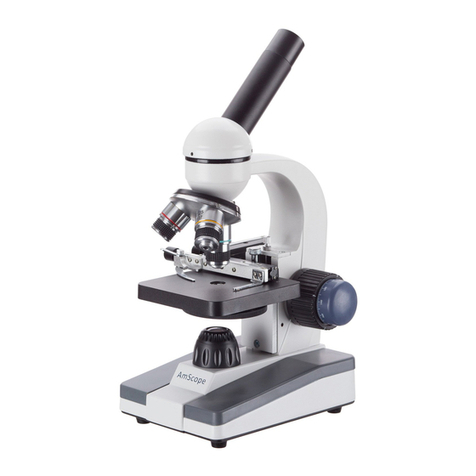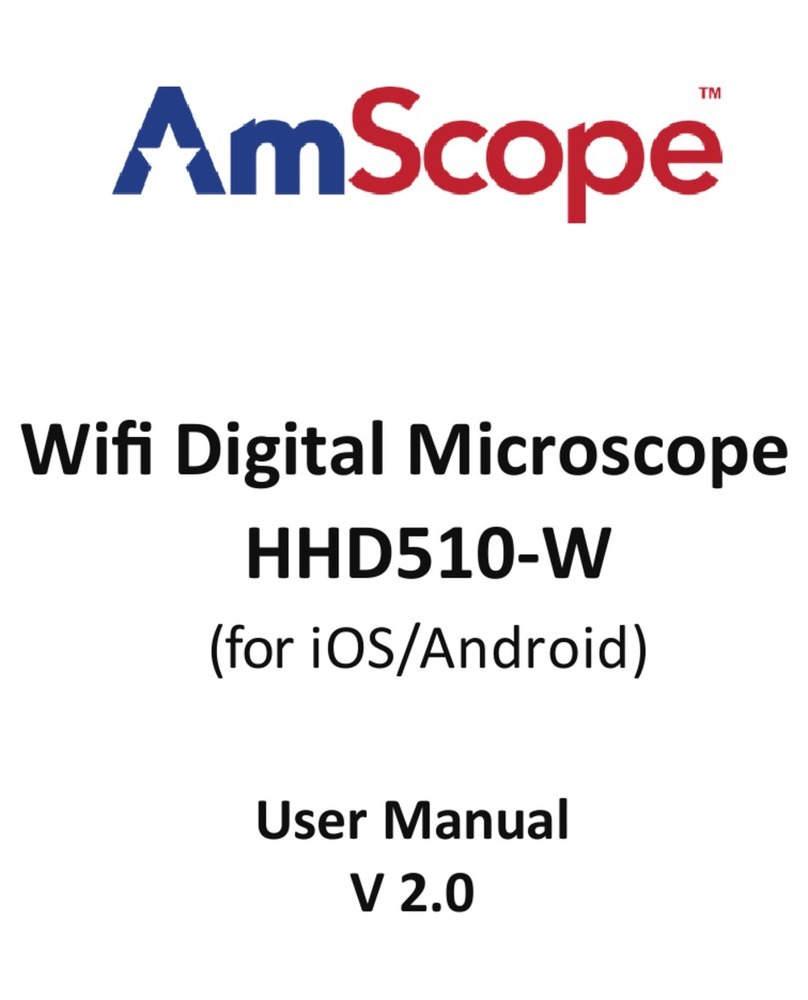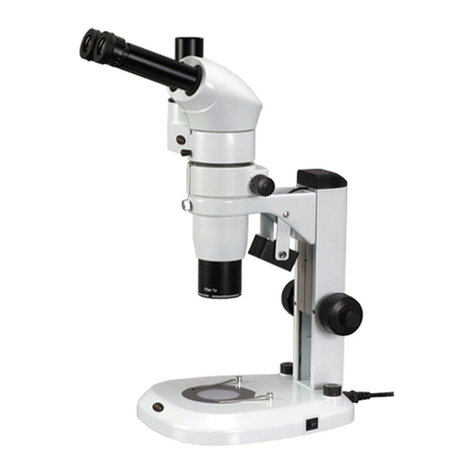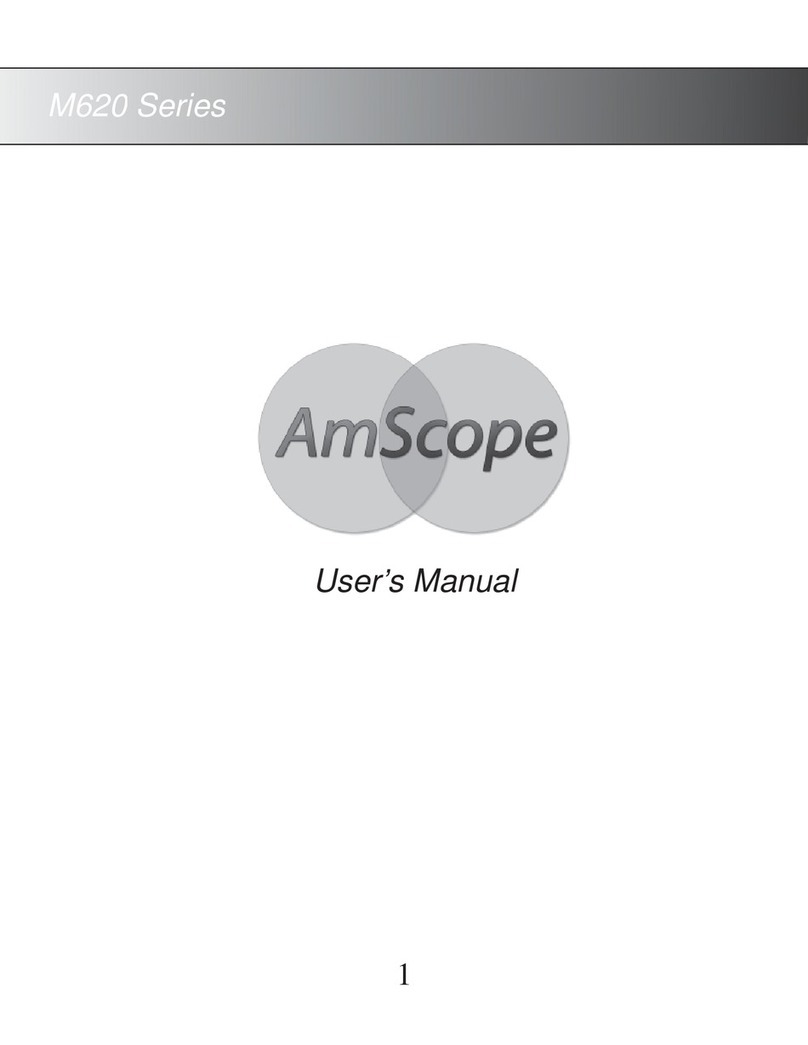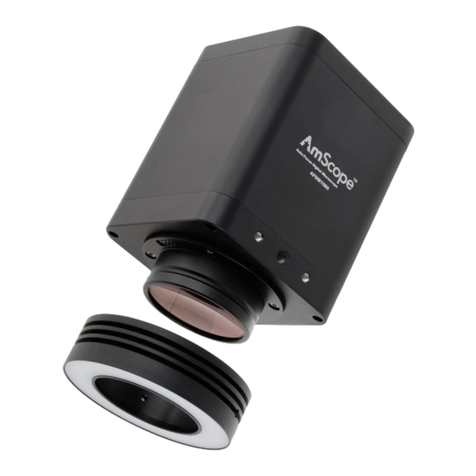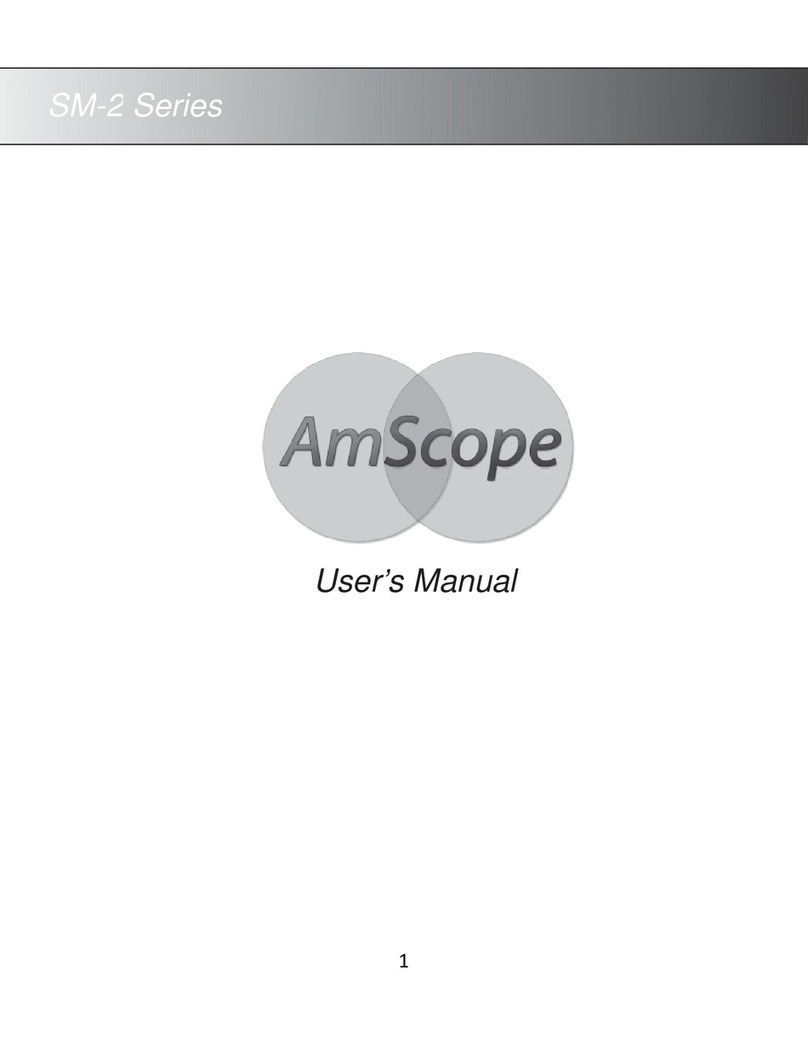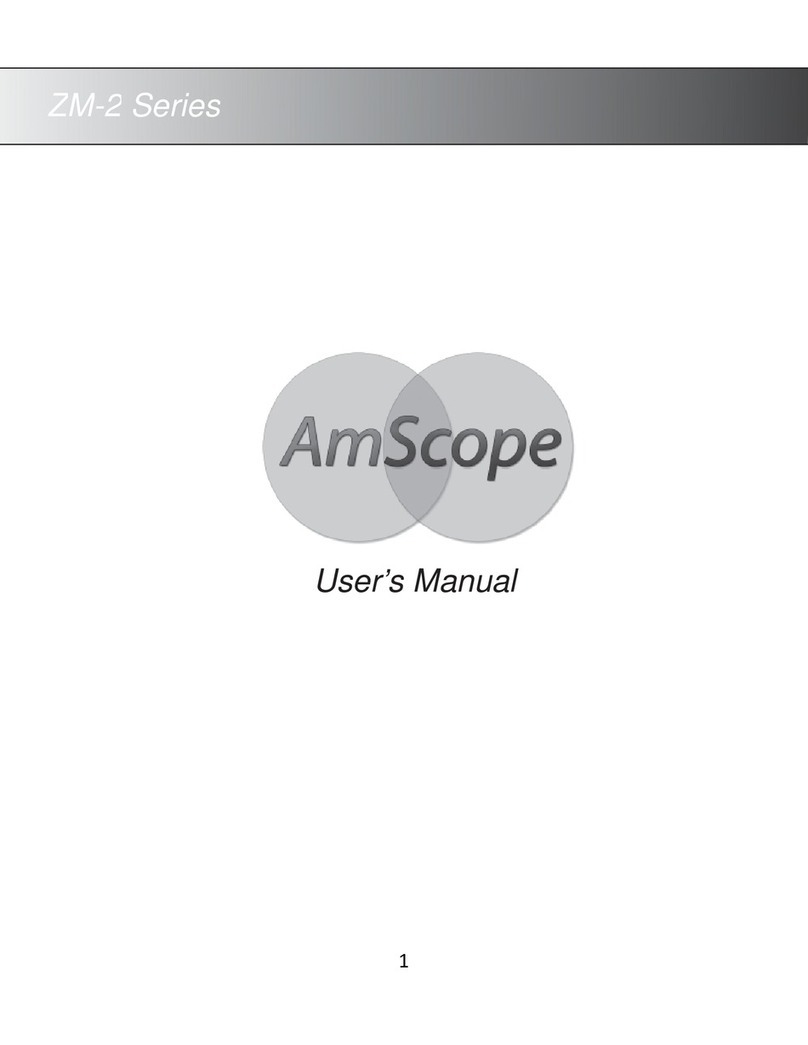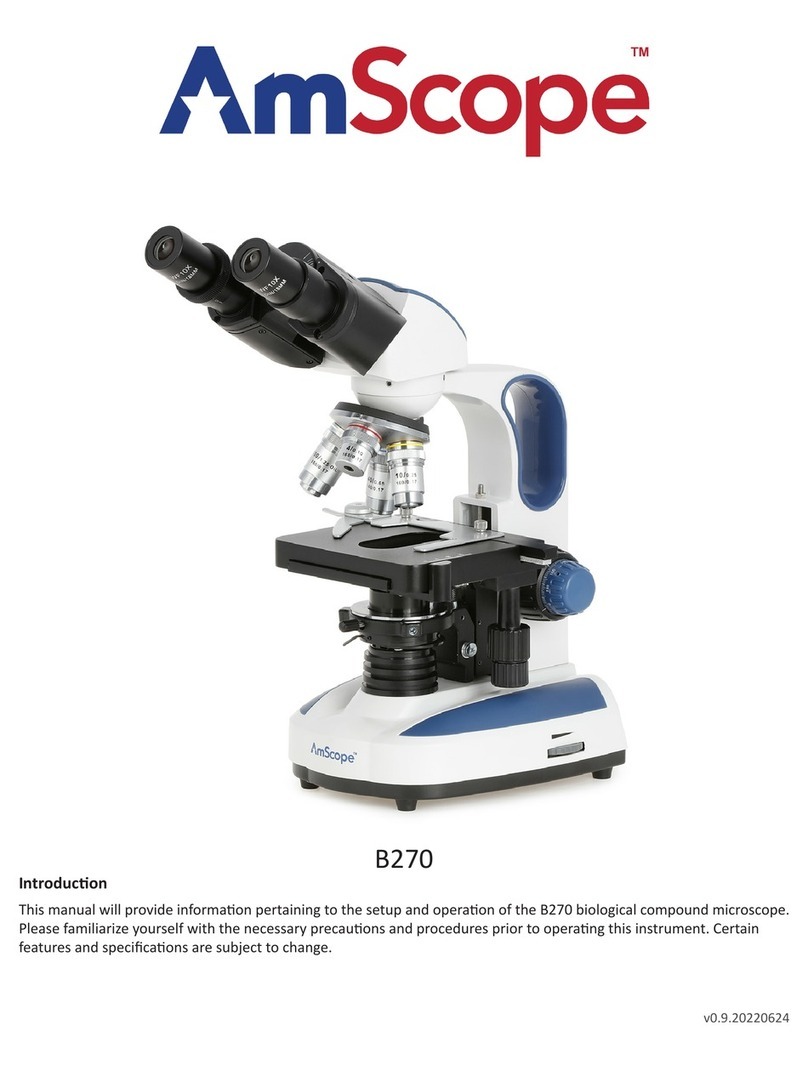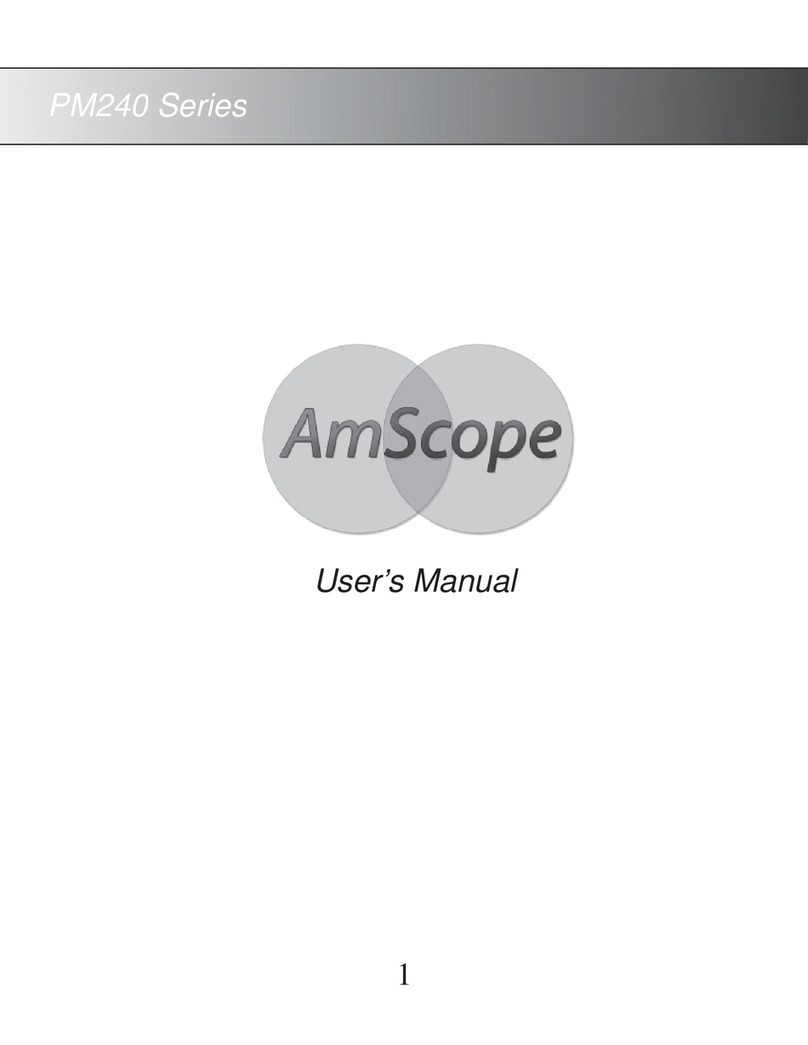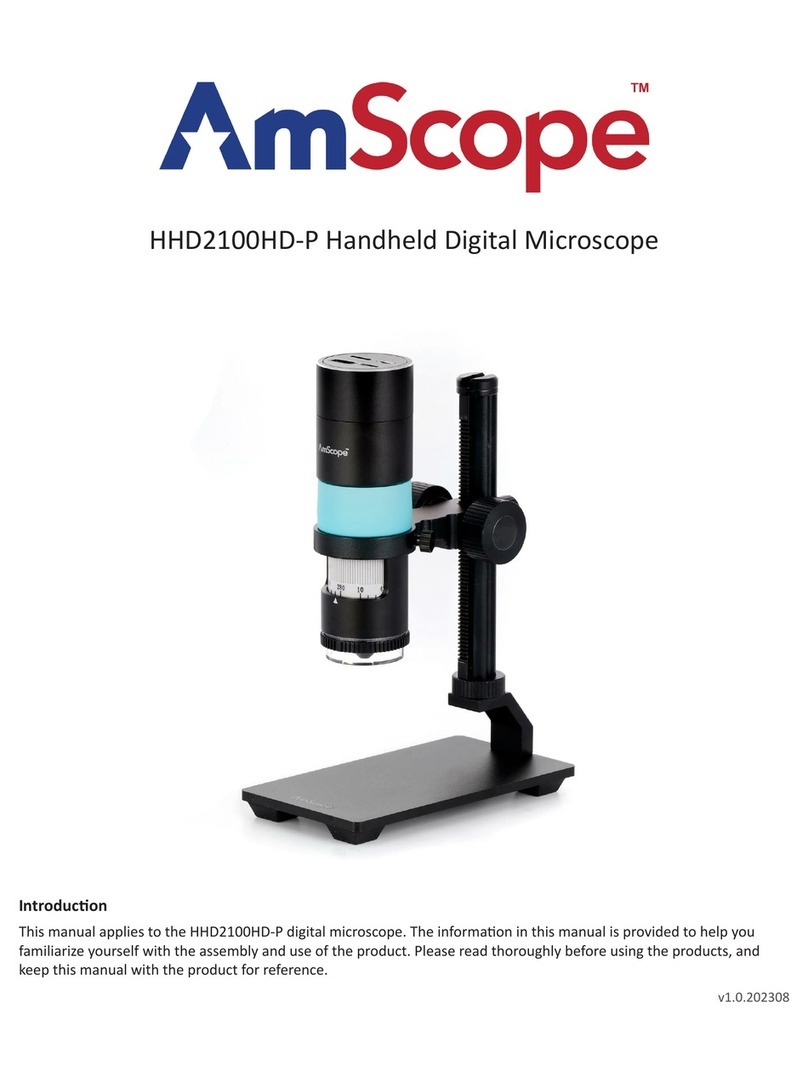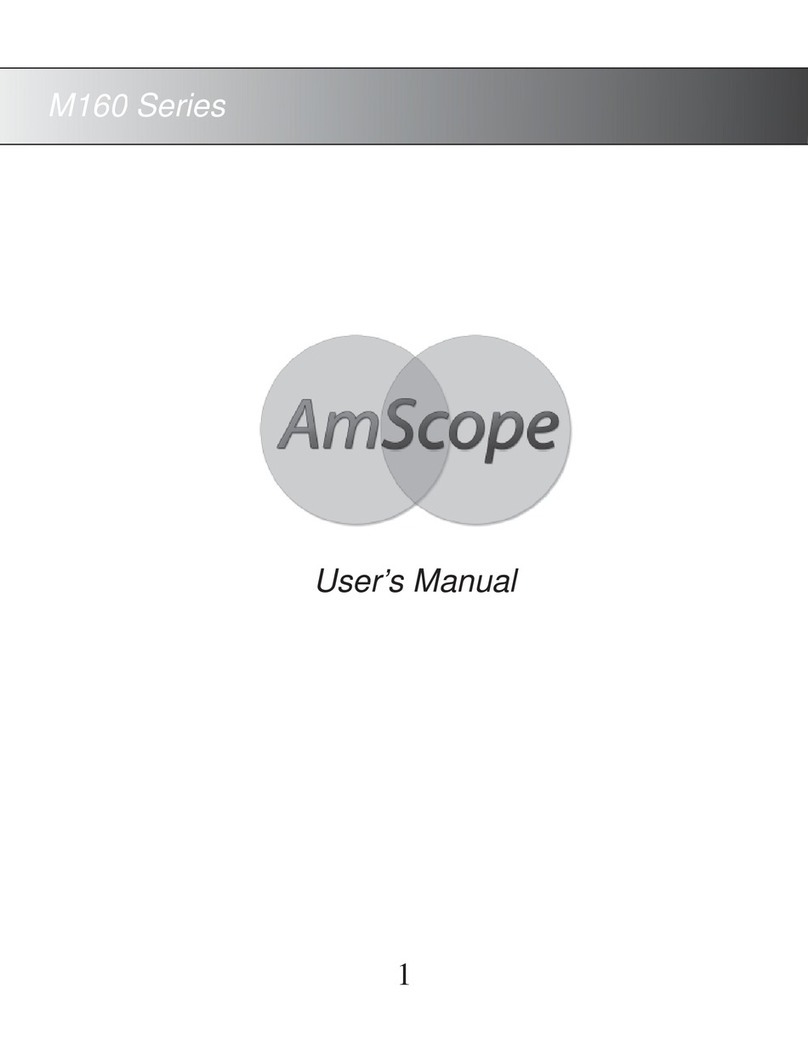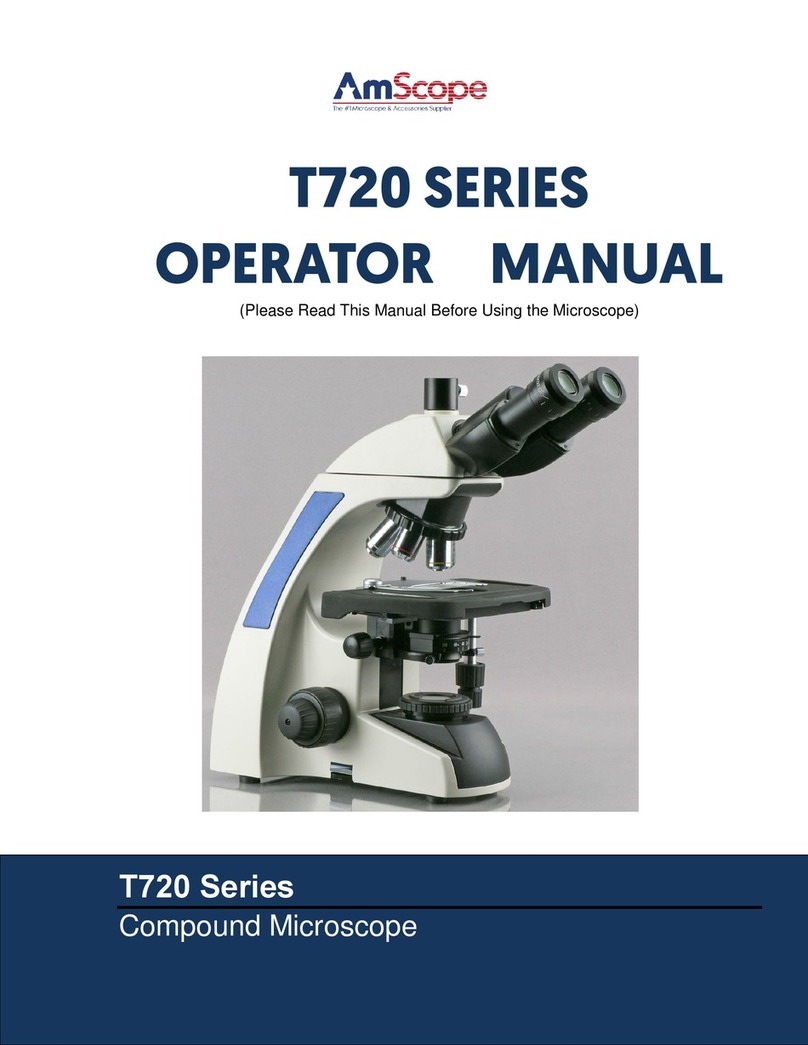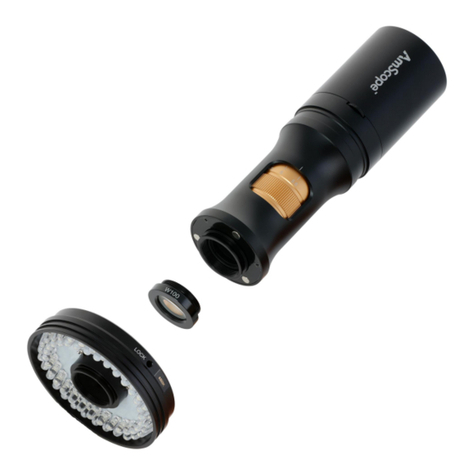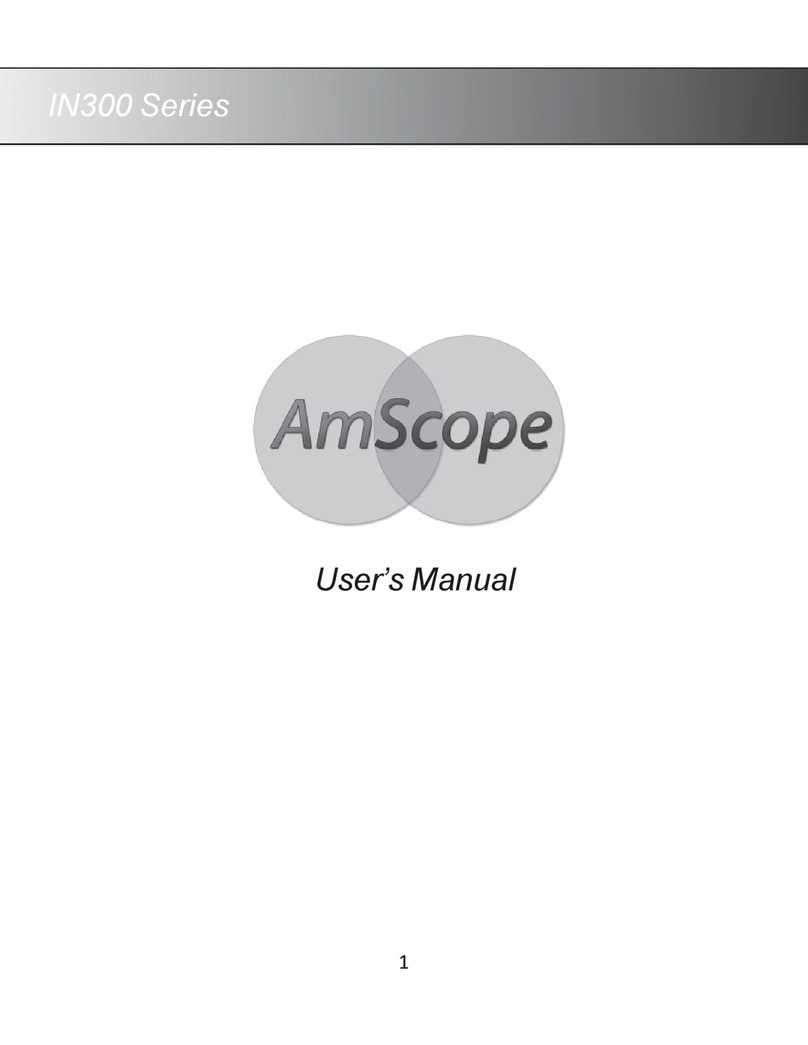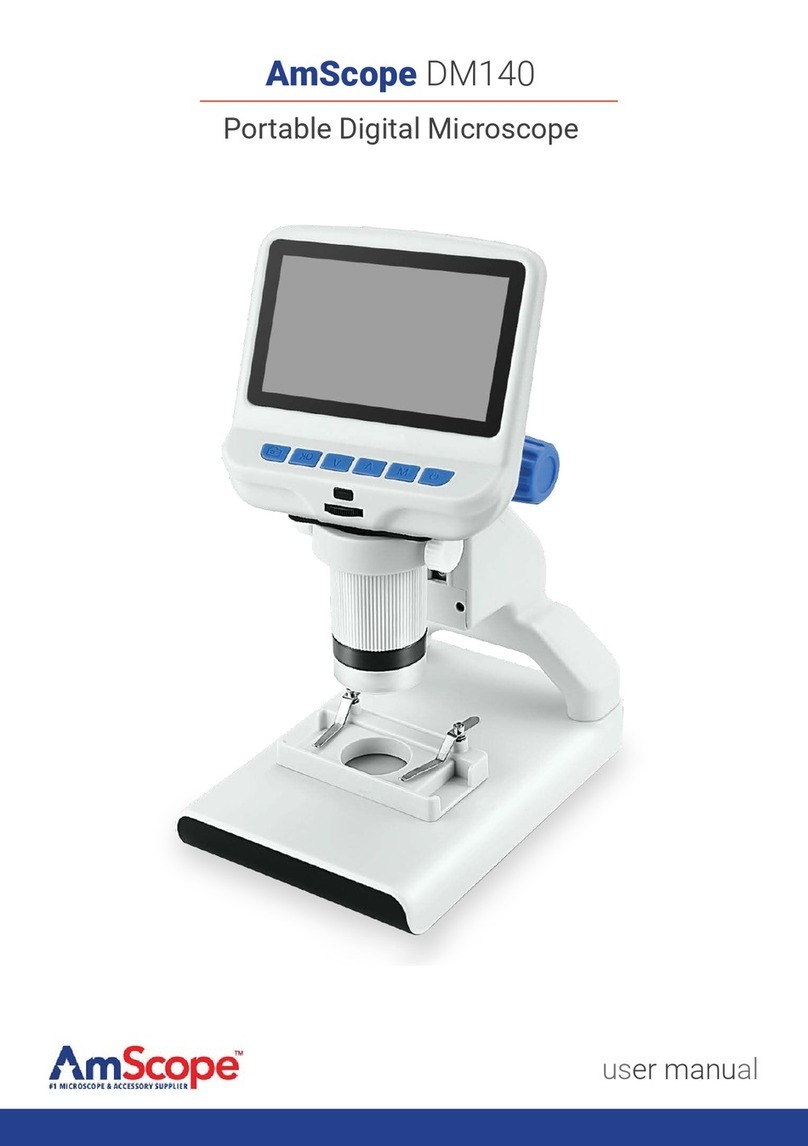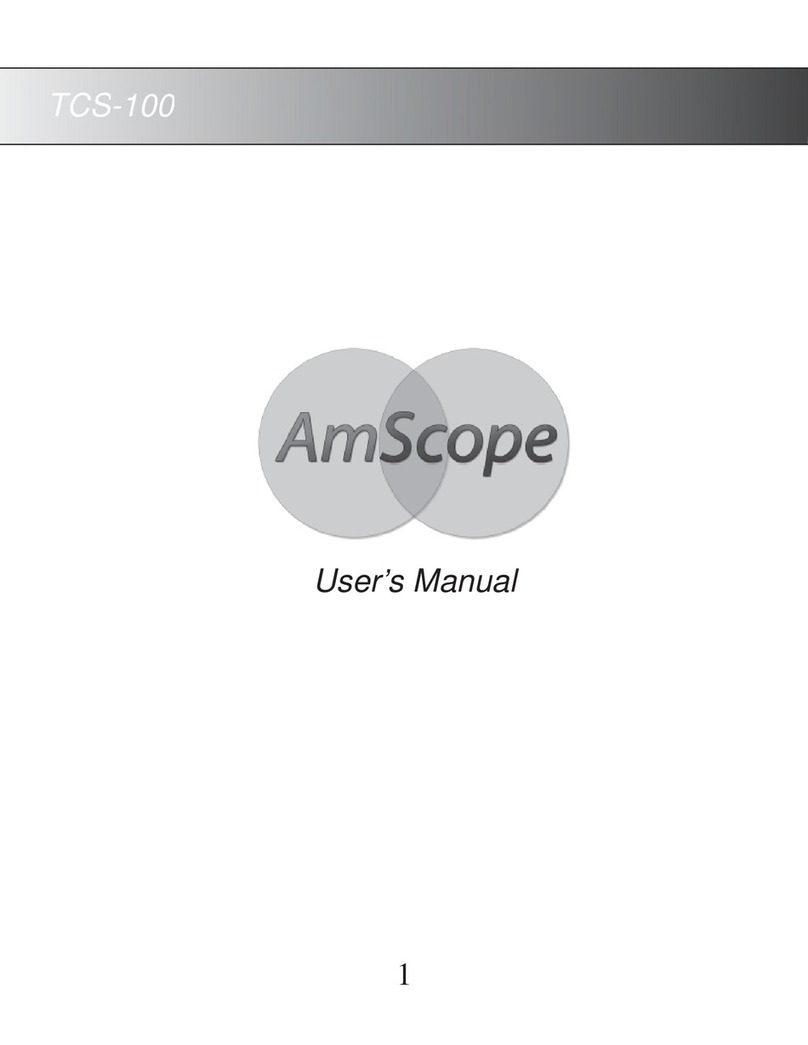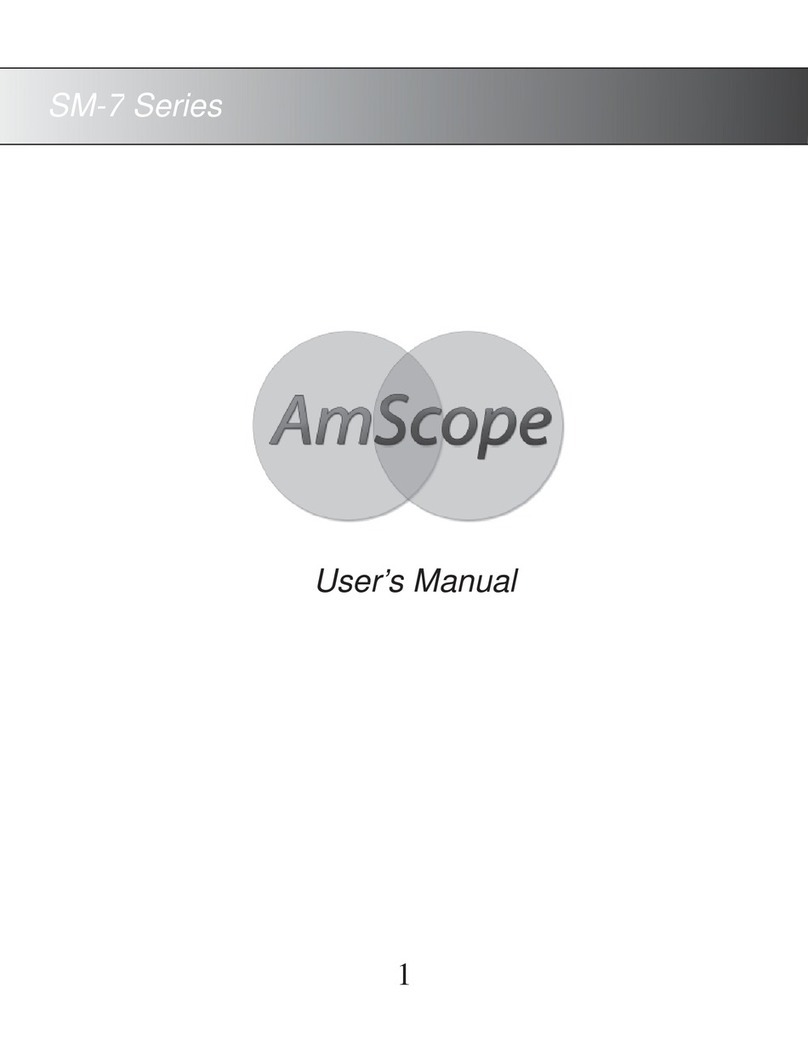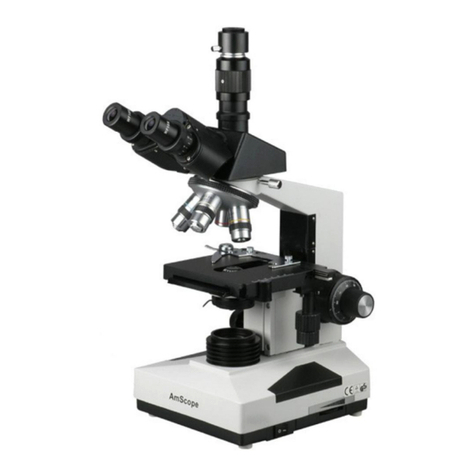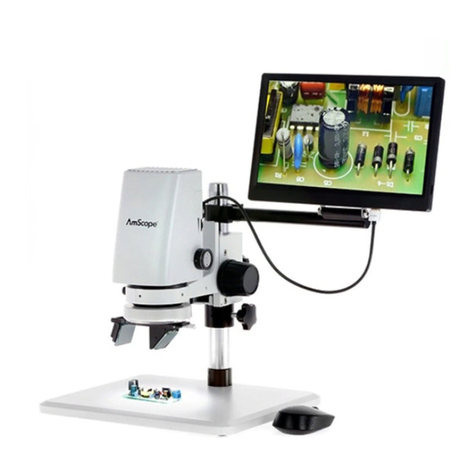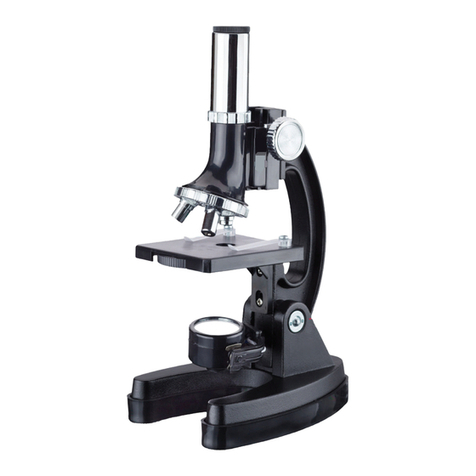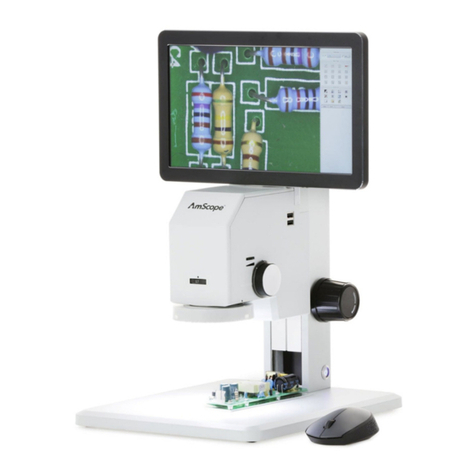
| amscope.com amscope.com |
S/N PROBLEM CAUSE SOLUTIONS
1Light source of
microscope is dim
No battery installed or
batteries are dead.
Install two AA
batteries in the battery
compartment
2
Light source is bright
but the image is not,
or the light is not
uniform
The objective lens is not
properly aligned
Rotate objective turret
until it clicks in place.
The lter wheel's aperture
is not correctly aligned
Rotate the lter wheel to
a suitable position
3 The image is blurry The focus is not correctly
set.
Follow the instructions
to properly focus.
Microscope Best Practices
The microscope should be used in a dry
environment. Do not use the microscope outside
in wet conditions as water can damage the light-
source or contaminate the optical system. Always
turn off the illuminator when the microscope is not
being used.
When storing the microscope, remove the
batteries to prevent corrosion. Always remove slides from the stage before putting
the microscope away. Do not use anything except lens cleaning tissue to clean the
lenses. Always carry the microscope with two hands - one around its arm and one
under the base. Keep the microscope in a cool, dry, dust-free place. Use a dust-
cover to prevent dust and humidity from entering the microscope.
Make a Record of Your Experiments
Begin to start thinking like a scientist as you
perform your experiments. Observe carefully and
make records of your experiments (make sure you
date them). Record the types of specimens you
observe; their colors, shapes and patterns; how they
look through each objective; how you prepare your
slides; what tools you use; how different specimens
compare with each other; and so forth.
Troubleshooting
If you are experiencing difculty with your microscope, try these troubleshooting
techniques:
1615
Observing Brine Shrimp:
Once your shrimp have hatched, cover the hatching station with the lid and observe
the shrimp through the magnifying lens.
For even higher magnication, suck up some shrimp into the pipette and place a
few drops of that water onto a blank microscope slide. Cover the droplets gently
with another slide, and then remove the covering slide. This will atten out the
water without crushing the shrimp.
Place the slide on your microscope stage and examine the shrimp with both the
medium and high lenses. The shrimp will be swimming rapidly. Move the slide
around to keep them in view.
Your brine shrimp will live for 1-3 days. If you want to observe them for a longer
period, feed them by adding a few grains of yeast to the hatching compartments.
Also, skim off unhatched eggs from the water surface so the growing shrimp can
get more oxygen.
Exciting Things to Look For
• When brine Shrimp rst hatch they only have one eye, called a naupliar eye and
an extra set of antennae with ne hairs to help them swim. Do you see the eye?
• After about 12 hours, the shrimp molt - shed their exoskeletons - and move
into a new stage of development. They will continue to molt until they reach
the adult stage about 8 days after hatching. If you are lucky, you might see one
as it molts!
• The adult brine shrimp have two eyes in addition to the naupliar eye. They also
have 11 pairs of what look like legs. These appendages are called phyllopads
and they are not all the same. Some are adapted for swimming while others are
used to scrape and lter algae, which is what shrimp mostly eat. Can you see
any differences in the phyllopods?
Experiments to Try
See what kind of water your shrimp like best. Place unsalted water into one
compartment, and ll the other three compartments with water that has salt at the
ratios of ½ teaspoon, 1 teaspoon and 2 teaspoons of salt per cup of water. Which
solution did they hatch best in? Were there any differences between the results
after 24 hours, 48 hours, and 72 hours?
See how pollutants in the water affect the shrimp. Once you have grown some
shrimp, use the pippette to transfer an equal amount to each half of your petri dish.
Then add a different pollutant to each sample. What happens when you add vinegar,
dish soap, sugar, soy sauce, or anything else to the water?

